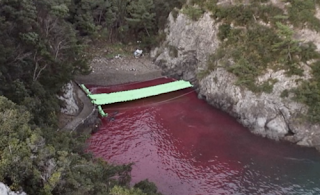Throughout
the course of this class, I have learned several things, but moreover this
class took me more into depth on some topics that I have merely brushed across
in my life so far. This project in general has forced me really truly take the
animal kingdom apart and realize that each and every species has its own
issues, history, and social perception. I have learned so much about dolphins
and can’t wait to start researching some of these topics about other animals
and species. I have learned that the human and non-human animal relationship is
filled with love and compassion in some ways and yet in other ways still filled
with misconception and misunderstanding. We, as a human race, have so very much
to learn about these other animals. I had many thoughts and perceptions of my
own coming into class, and although some may have slightly altered, many have
only strengthened or pushed me to want more knowledge about these topics. The
topics throughout this course have all impacted me greatly, for I now want to
go out with this information and impact others, and make a difference for all
these animals. As far as the top of the list goes, I would have to say breed
discrimination and breed bullying are huge for me just because it is so widely
misunderstood and miscommunicated. I am a former pitbull owner, and know from
experience that these dogs are no different from the “sweet natured” dogs.
Another topic for me would indeed be the marine mammals in captivity and zoo
animal conservation because these are areas in which I may work in my future
considering I want to use my animal science degree working with exotic animals.
This course is extremely beneficial in the aspect that it instills facts and
knowledge for these students to go out and share with the world, in turn
hopefully making changes and a difference, but it also instills passion and
compassion. These students will feel compassionate towards these animals and it
my drive them to be so passionate about it that they go out and take on one or
multiple of these issues on their own. I know that this class has instilled
even more compassion in me, not towards animals because that compassion could
not grow anymore, but towards humans. I have learned to forgive humans and try
to help them understand these issues rather than just getting angry, frustrated
and hateful towards them. This is a lesson I can carry with me through life and
will positively affect me forever.










































